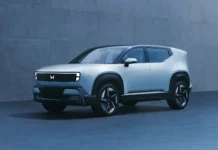
Tesla is diving into large-scale power storage in Texas.
Bloomberg reported Monday that Tesla has been building out a 100 megawatt energy storage site in Angleton, Texas, about 40 miles outside Houston. The battery pack could supply power to 20,000 homes on a summer day — an especially useful development after devastating winter storms crippled the state’s power grid in late February.
While Tesla is obviously well-known for building electric cars, CEO Elon Musk has also branched it out into other ventures as well. Among them are solar panel technology as well as “Megapack” energy storage through massive battery farms. Tesla built out the first Megapack in South Australia back in 2017, the largest battery project in the world at the time. The company is also constructing a 182.5 megawatt system in the San Francisco Bay Area, a project with utility provider PG&E Corp. that should be operational by August 2021.

Expanding renewable energy at a critical time
As for the electric car giant’s Texas project, the Brazoria County site is registered under Gambit Energy Storage, a Tesla subsidiary. A filing with the Electric Reliability Council of Texas, which supplies power on an independent grid to much of the state and recently drew sharp criticism for the large-scale blackouts as well as blindsiding customers with electric bills totaling thousands of dollars each, shows that Gambit’s project has an expected commercial opening date of June 1, 2021.
The large battery pack system aims to stabilize a particularly volatile part of the state’s power grid. It will charge from the grid when energy prices are low. Then, when there’s a power shortage, the pack will supply energy back to the grid. The installation can also kick-start power to affected areas in the event of a major blackout or a natural disaster, according to local officials.
According to the Bloomberg report, Angleton city staff held a meeting to discuss the storage park, and Tesla logos were visible at the construction site, even though parts of it were covered and workers discouraged photography. When complete, the site will be unmanned, but remotely monitored at all times “with no emissions of any kind”.
























